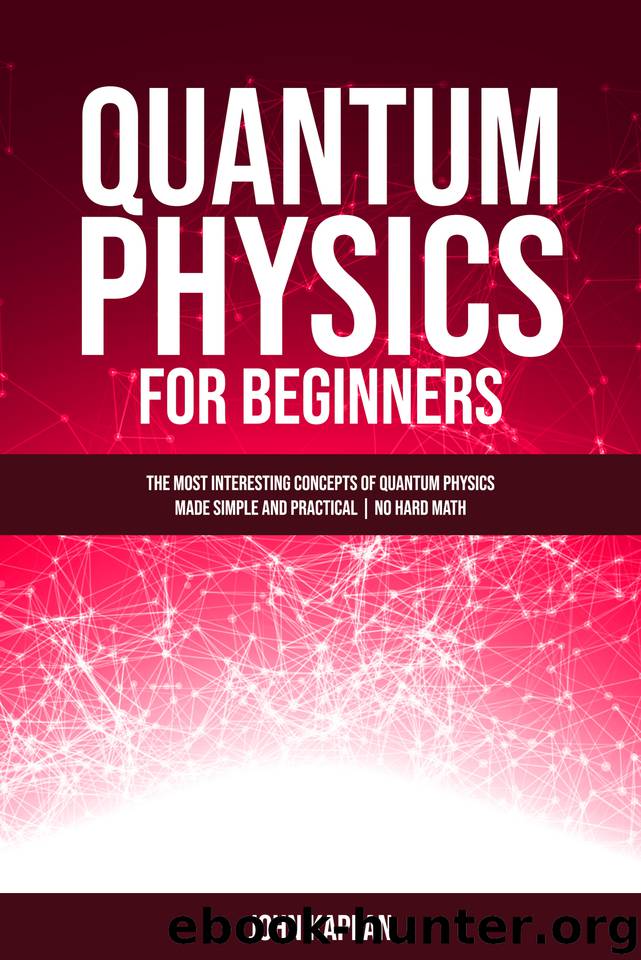QUANTUM PHYSICS FOR BEGINNERS: The Most Interesting Concepts of Quantum Physics Made Simple and Practical | No Hard Math by Kaplan John

Author:Kaplan, John [Kaplan, John]
Language: eng
Format: epub
Published: 2020-03-29T16:00:00+00:00
Chapter 10
The First Quantum Concept
A ll objects in the universe are constantly exchanging energy in the form of electromagnetic radiation. Each object emits, partially absorbs, and partially reflects electromagnetic waves. The amount of energy of the object is direct evidence by its temperature, i.e., the energy of its atoms’ vibrations (thermal motion).
Most of the objects around us are of average temperature, so their emissions are weak and almost exclusively in the infrared range. However, the higher the temperature is, the more energy they have, and the more they emit this energy, that is how the objects cool off.
As we know, when increasing the temperature of an object, it begins to glow red, changing the color of the glow to orange, then to yellow, and finally to white if the temperature continues to rise. It means that as the temperature rises, objects emit visible light more and more in addition to the infrared radiation. First, the visible light is adding to the infrared light with the largest wavelength, about 750nm, i.e., the red light adjacent to the infrared range in the spectrum. As the temperature rises, the light with the shorter and shorter wavelength is gradually adding (colors following across the breadth of the visible light spectrum), until a sufficiently high temperature brings up the whole spectrum of colors, resulting in whiteness. Moreover, the ultraviolet (UV) range is also gradually added after the visible light: more and more, shorter, and shorter waves. Thus, as the object’s temperature rises, the radiation range gradually expands from the starting infrared range towards UV frequencies.
But why is the radiation changing that way? Why do the objects not radiate the entire radiation range evenly?
This divergence between theory and reality was called the ultraviolet catastrophe. Now, as objects never have the endless quantity of energy, it would make the most sense if they just emitted all the present energy at once. In practice, that would look like the world is full of radiation, gamma radiation mostly, and much colder objects, which would be very hard to heat.
As already mentioned, in addition to emitting their energy, objects also reflect a certain amount of radiation from surrounding objects. It complicates the overall picture if you are precisely trying to measure only the emitted radiation, which must somehow distinguish from the reflected radiation. As is usually the case in practical science, scientists have never had a perfect black body. Still, there were some inventions that reflected radiation very little and allowed scientists to conduct experiments much more precisely than with natural objects). It would guarantee that they were dealing with the emitted radiation depends on the temperature of the object.
Scientists were looking for some additional explanation of why the radiation had a limited range and quantity. It was one of the greatest scientific mysteries of the time, mainly since the established laws of physics in the 19th century – which said that objects must give off their energy with unlimited intensity – worked perfectly on other vital issues. As it
Download
This site does not store any files on its server. We only index and link to content provided by other sites. Please contact the content providers to delete copyright contents if any and email us, we'll remove relevant links or contents immediately.
The Complete Stick Figure Physics Tutorials by Allen Sarah(7273)
Secrets of Antigravity Propulsion: Tesla, UFOs, and Classified Aerospace Technology by Ph.D. Paul A. Laviolette(5245)
Thing Explainer by Randall Munroe(3854)
The River of Consciousness by Oliver Sacks(3504)
The Order of Time by Carlo Rovelli(3102)
How To by Randall Munroe(2977)
A Brief History of Time by Stephen Hawking(2918)
I Live in the Future & Here's How It Works by Nick Bilton(2907)
The Great Unknown by Marcus du Sautoy(2621)
What If?: Serious Scientific Answers to Absurd Hypothetical Questions by Randall Munroe(2595)
Midnight in Chernobyl by Adam Higginbotham(2439)
Blockchain: Ultimate Step By Step Guide To Understanding Blockchain Technology, Bitcoin Creation, and the future of Money (Novice to Expert) by Keizer Söze(2414)
Networks: An Introduction by Newman Mark(2309)
The Meaning of it All by Richard Feynman(2275)
Easy Electronics by Charles Platt(2257)
The Tao of Physics by Fritjof Capra(2209)
Midnight in Chernobyl: The Untold Story of the World's Greatest Nuclear Disaster by Adam Higginbotham(2133)
When by Daniel H Pink(2062)
Introducing Relativity by Bruce Bassett(2053)
